6 Deprecated Linux Commands and Alternative Tools You Should Use
Linux has many command line tools that can perform a variety of tasks. However, over time, some tools become obsolete and are replaced by other newer command line tools.
In this guide, we’ll focus on 6 deprecated Linux commands and the replacement tools you should use. Most of these commands are network tools provided by the net-tools package, which has not been actively maintained for a long time now.
1.ifconfig command
Linux ifconfig command is a network command used to view and modify the settings of a network interface. It displays network interface details such as interface name, IP address settings, MTU and hardware address, etc. It can also be used to shut down or bring up an interface.
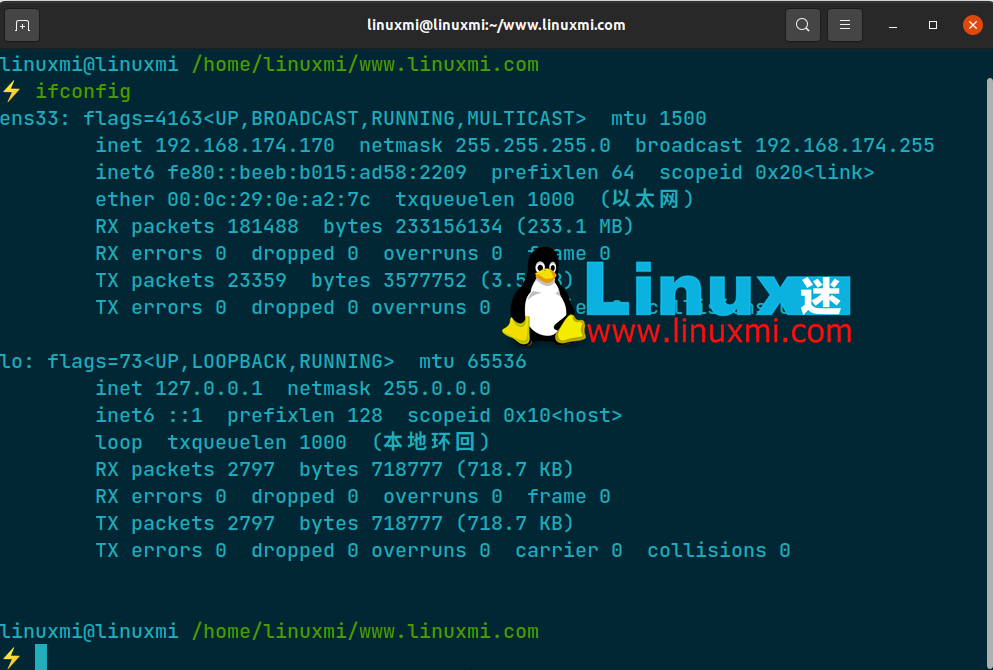
The ifconfig command has been replaced by the ip command, which takes the following form.
linuxmi@linuxmi /home/linuxmi/www.linuxmi.com ⚡ ip address
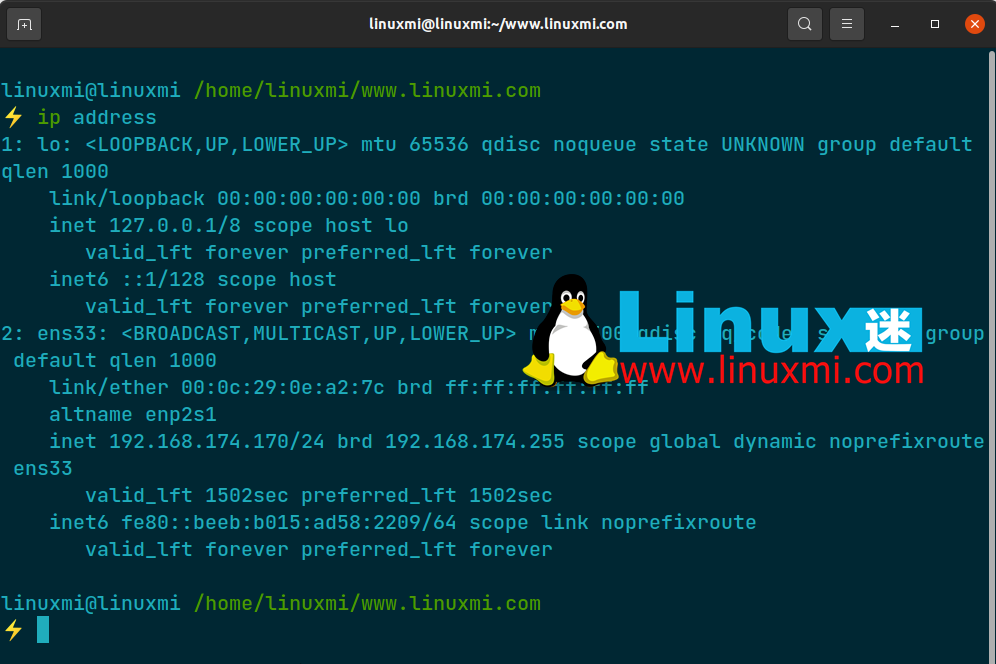
or:
linuxmi@linuxmi /home/linuxmi/www.linuxmi.com ⚡ ip addr
or
linuxmi@linuxmi /home/linuxmi/www.linuxmi.com ⚡ ip a
“
or
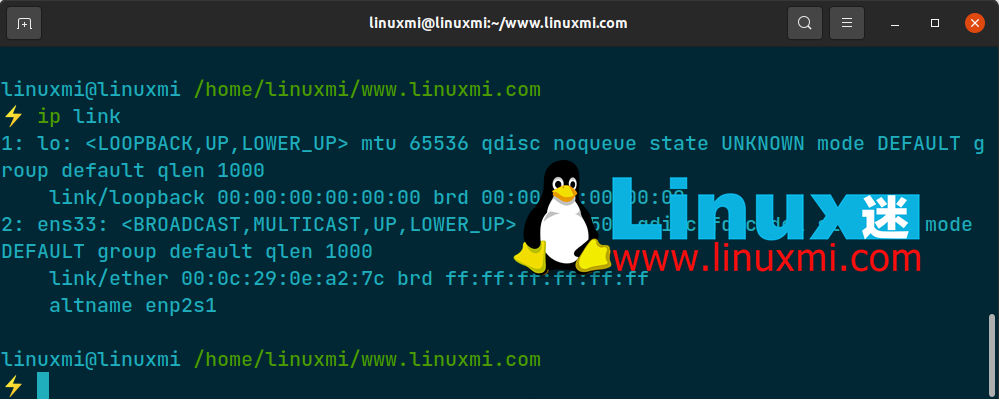
Checking IP address in Linux
2. netstat command
Linux netstat command is a command line tool used to monitor various network statistics. It monitors active network connections, incoming and outgoing connections, routing tables, and listening ports as well as the PIDs of the services associated with the listening ports.
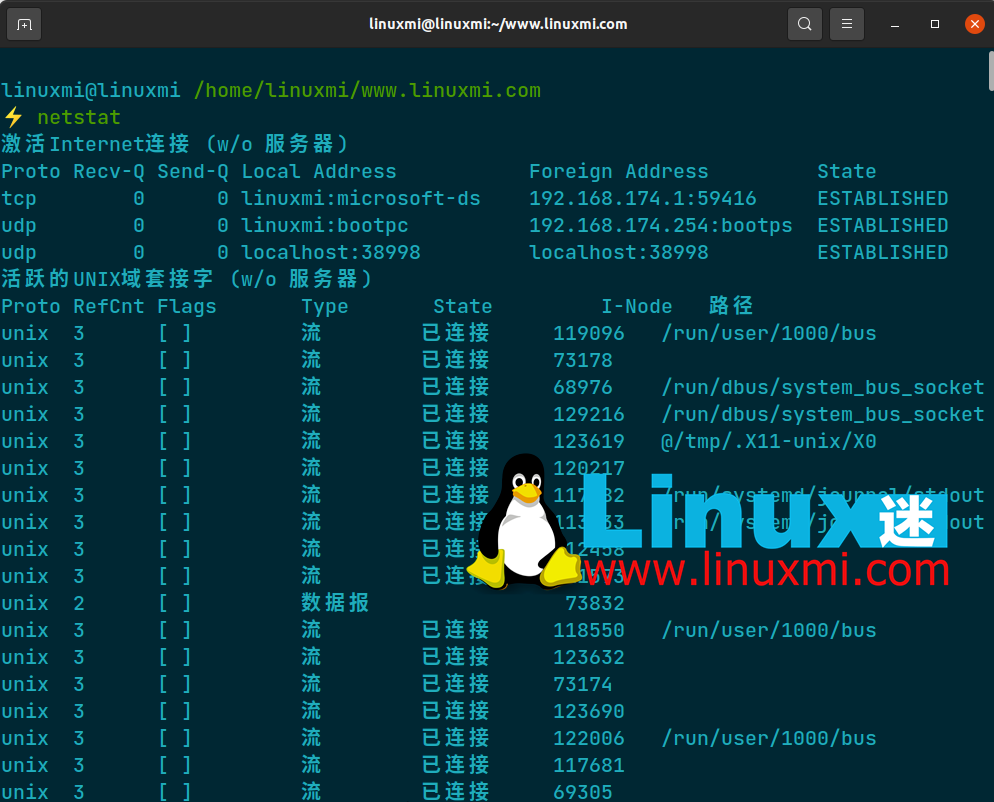
This command has been replaced by the ss command which performs similar tasks.
linuxmi@linuxmi /home/linuxmi/www.linuxmi.com ⚡ ss -t State Recv-Q Send-Q Local Address:Port Peer Address:Port Process ESTAB 0 0 192.168.174.170:microsoft-ds 192.168.174.1:59416
linuxmi@linuxmi /home/linuxmi/www.linuxmi.com ⚡ ss -l
“
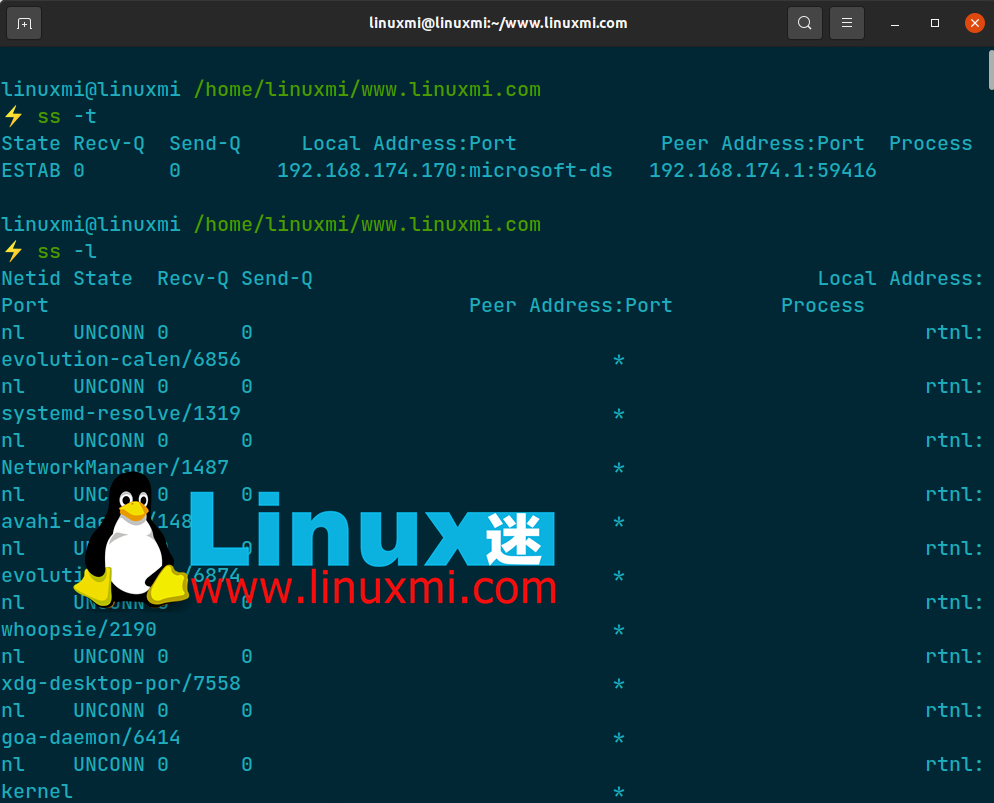
[You may also like: 12 ss command examples for monitoring network connections] https://www.linuxmi.com/linux-ss-command.html
3. scp command
The scp command, short for secure copy, has long been used to securely transfer files from one Linux system to another. However, this scp command has been deprecated by RHEL 9 due to numerous security challenges. In fact, modern Red Hat distributions no longer ship with scp.
Related: How to pass password to scp command in Linux https://www.linuxmi.com/linux-password-scp.html
scp has been superseded by alternatives such as rsync and sftp.
linuxmi@linuxmi /home/linuxmi/www.linuxmi.com ⚡ sftp linuxmi@192.168.174.170

or
linuxmi@linuxmi /home/linuxmi/www.linuxmi.com ⚡ rsync -zvh linuxmi.tar.xz /tmp/backups/
“
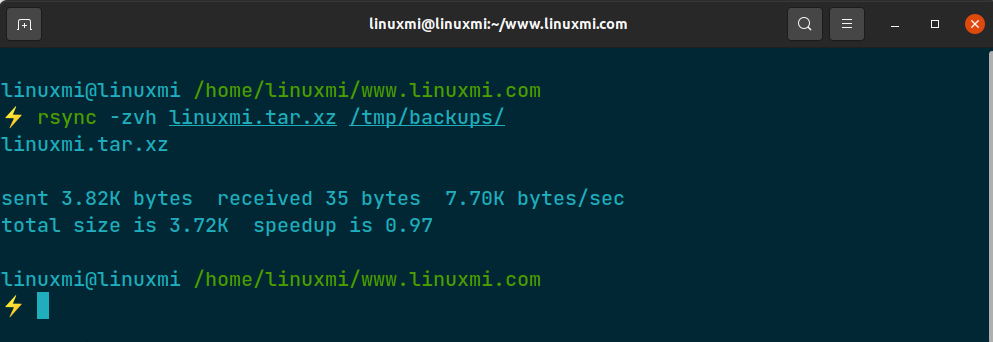
Linux file transfer command
4. route command
route The route command line tool allows you to view and change the routing table of your Linux system.
This tool has been replaced by the ip route command.
linuxmi@linuxmi /home/linuxmi/www.linuxmi.com ⚡ ip route show
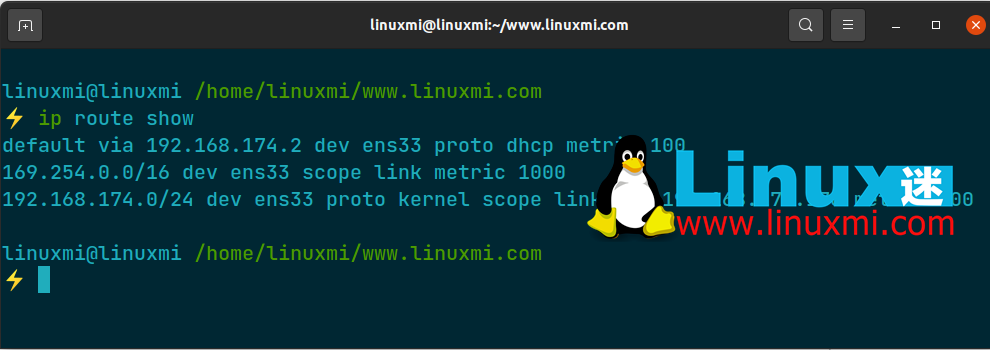
Check Linux routing table
5. egrep and fgrep commands
egrep and fgrep commands belong to the grep function series.
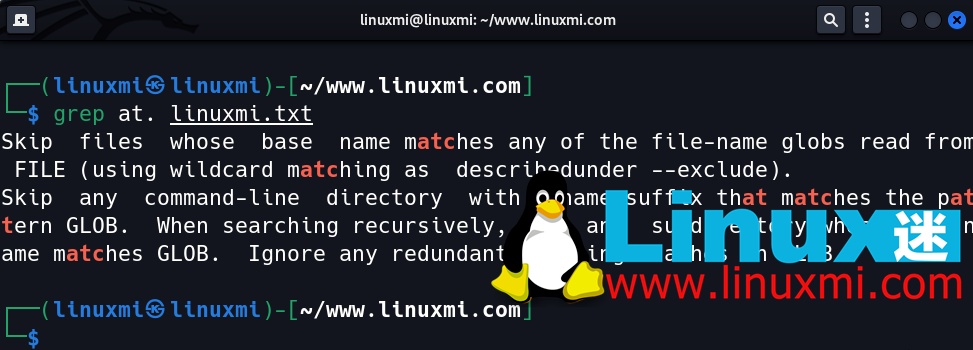
The following is a brief description of the function of each command.
- The egrep command is a pattern search utility that prints out lines in a file that match a specific string or pattern.
- The fgrep command searches one or more files for a fixed string. The
egrep command has been replaced by grep -E, and fgrep has been replaced by grep -F.
Related Links:
- How to search for a string using fgrep command in Linux https://www.linuxmi.com/linux-fgrep.html
- How to search for a string using fgrep command in Linux https://www.linuxmi.com/linux-fgrep.html
- Find all files containing specific text on Linux using grep https://www.linuxmi.com/linux-grep.html
- Advanced usage examples of Linux grep command https://www.linuxmi.com/linux-grep-mingling-gaoji.html
6, arp, route, iptunnel and nameif commands
Nearly all network command line tools in the net-tools package have been deprecated or replaced by new tools. arp, route, iptunnel and nameif have been deprecated in favor of better tools.
The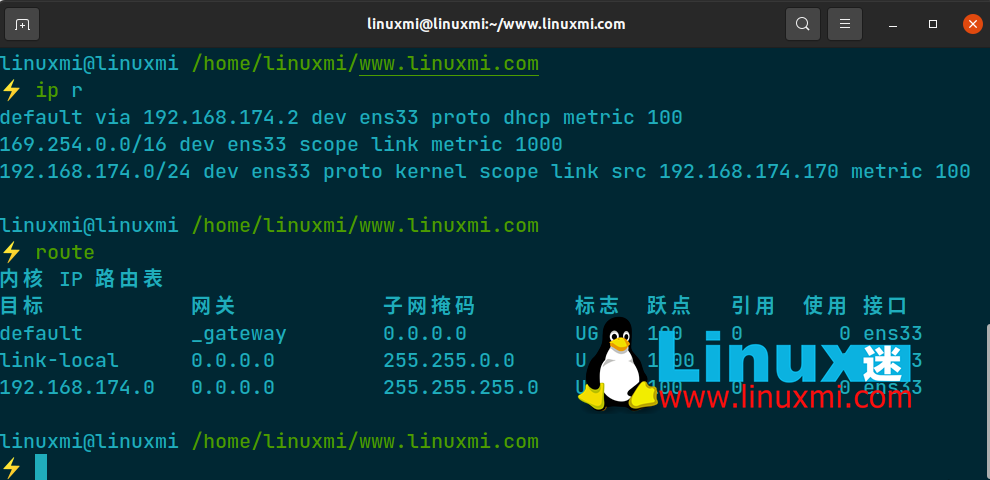
command has been replaced as follows.
- arp – Superseded by the ip neighbor (ip n) command.
- route – Superseded by the ip route (ip r) command.
- iptunnel – Superseded by the ip tunnel command.
- nameif – replaced by the ip link command.
in conclusion
This is a summary of some commands that have been deprecated and replaced by modern replacements. It's worth pointing out that although some of these commands have been deprecated or considered obsolete, they are still valid when executed.
Deprecated network tools (such as ifconfig, route, and netstat) will still provide the required information when executed. Ultimately, the decision of which command line tool to use is entirely up to the user.
The above is the detailed content of 6 Deprecated Linux Commands and Alternative Tools You Should Use. For more information, please follow other related articles on the PHP Chinese website!

Hot AI Tools

Undresser.AI Undress
AI-powered app for creating realistic nude photos

AI Clothes Remover
Online AI tool for removing clothes from photos.

Undress AI Tool
Undress images for free

Clothoff.io
AI clothes remover

Video Face Swap
Swap faces in any video effortlessly with our completely free AI face swap tool!

Hot Article

Hot Tools

Notepad++7.3.1
Easy-to-use and free code editor

SublimeText3 Chinese version
Chinese version, very easy to use

Zend Studio 13.0.1
Powerful PHP integrated development environment

Dreamweaver CS6
Visual web development tools

SublimeText3 Mac version
God-level code editing software (SublimeText3)

Hot Topics
 What computer configuration is required for vscode
Apr 15, 2025 pm 09:48 PM
What computer configuration is required for vscode
Apr 15, 2025 pm 09:48 PM
VS Code system requirements: Operating system: Windows 10 and above, macOS 10.12 and above, Linux distribution processor: minimum 1.6 GHz, recommended 2.0 GHz and above memory: minimum 512 MB, recommended 4 GB and above storage space: minimum 250 MB, recommended 1 GB and above other requirements: stable network connection, Xorg/Wayland (Linux)
 Linux Architecture: Unveiling the 5 Basic Components
Apr 20, 2025 am 12:04 AM
Linux Architecture: Unveiling the 5 Basic Components
Apr 20, 2025 am 12:04 AM
The five basic components of the Linux system are: 1. Kernel, 2. System library, 3. System utilities, 4. Graphical user interface, 5. Applications. The kernel manages hardware resources, the system library provides precompiled functions, system utilities are used for system management, the GUI provides visual interaction, and applications use these components to implement functions.
 vscode terminal usage tutorial
Apr 15, 2025 pm 10:09 PM
vscode terminal usage tutorial
Apr 15, 2025 pm 10:09 PM
vscode built-in terminal is a development tool that allows running commands and scripts within the editor to simplify the development process. How to use vscode terminal: Open the terminal with the shortcut key (Ctrl/Cmd). Enter a command or run the script. Use hotkeys (such as Ctrl L to clear the terminal). Change the working directory (such as the cd command). Advanced features include debug mode, automatic code snippet completion, and interactive command history.
 How to check the warehouse address of git
Apr 17, 2025 pm 01:54 PM
How to check the warehouse address of git
Apr 17, 2025 pm 01:54 PM
To view the Git repository address, perform the following steps: 1. Open the command line and navigate to the repository directory; 2. Run the "git remote -v" command; 3. View the repository name in the output and its corresponding address.
 How to run java code in notepad
Apr 16, 2025 pm 07:39 PM
How to run java code in notepad
Apr 16, 2025 pm 07:39 PM
Although Notepad cannot run Java code directly, it can be achieved by using other tools: using the command line compiler (javac) to generate a bytecode file (filename.class). Use the Java interpreter (java) to interpret bytecode, execute the code, and output the result.
 Where to write code in vscode
Apr 15, 2025 pm 09:54 PM
Where to write code in vscode
Apr 15, 2025 pm 09:54 PM
Writing code in Visual Studio Code (VSCode) is simple and easy to use. Just install VSCode, create a project, select a language, create a file, write code, save and run it. The advantages of VSCode include cross-platform, free and open source, powerful features, rich extensions, and lightweight and fast.
 What is the main purpose of Linux?
Apr 16, 2025 am 12:19 AM
What is the main purpose of Linux?
Apr 16, 2025 am 12:19 AM
The main uses of Linux include: 1. Server operating system, 2. Embedded system, 3. Desktop operating system, 4. Development and testing environment. Linux excels in these areas, providing stability, security and efficient development tools.
 vscode terminal command cannot be used
Apr 15, 2025 pm 10:03 PM
vscode terminal command cannot be used
Apr 15, 2025 pm 10:03 PM
Causes and solutions for the VS Code terminal commands not available: The necessary tools are not installed (Windows: WSL; macOS: Xcode command line tools) Path configuration is wrong (add executable files to PATH environment variables) Permission issues (run VS Code as administrator) Firewall or proxy restrictions (check settings, unrestrictions) Terminal settings are incorrect (enable use of external terminals) VS Code installation is corrupt (reinstall or update) Terminal configuration is incompatible (try different terminal types or commands) Specific environment variables are missing (set necessary environment variables)






